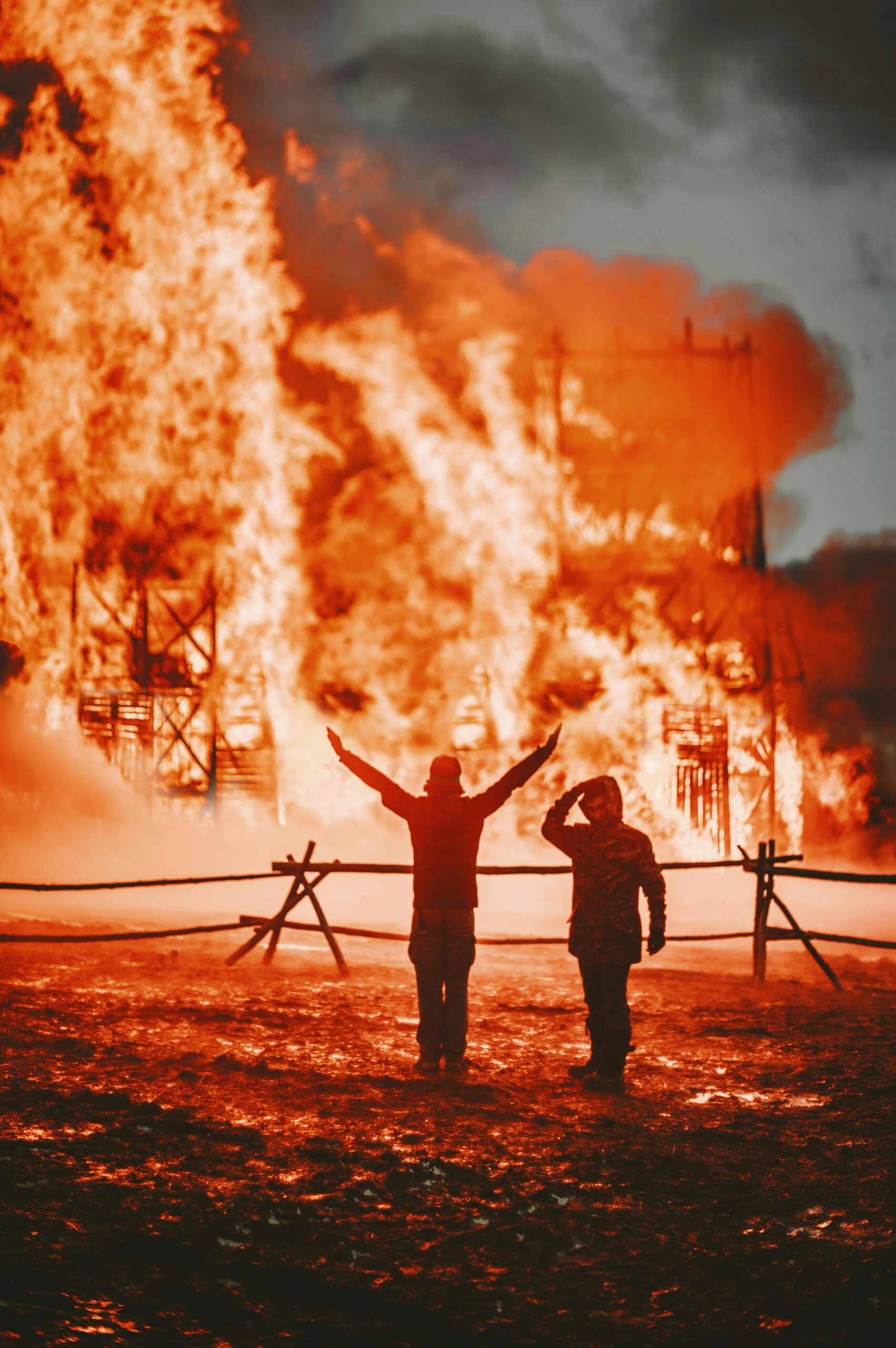Experiencing a house fire is one of the most traumatic events a homeowner can face. The immediate danger of the fire itself is followed by the overwhelming task of recovery, which includes both emotional and physical aspects. While the structural damage to your home might be the most visible result, the emotional toll and the process of rebuilding your life can be just as challenging. Understanding how to navigate this recovery process is crucial to moving forward after such a devastating event.
This article explores the steps involved in both the emotional and physical cleanup after fire damage, offering practical advice to help you regain a sense of normalcy.
1. Addressing the Emotional Impact of Fire Damage
The emotional aftermath of a fire can be intense, with feelings of loss, fear, and uncertainty often dominating the recovery process. It’s important to acknowledge these emotions and find healthy ways to cope as you begin the journey to rebuild.
- Understanding the Emotional Toll
The loss of personal belongings, memories, and the sense of security a home provides can lead to a range of emotions, from grief to anxiety. It’s natural to feel overwhelmed, and allowing yourself to process these emotions is a vital part of healing. - Seeking Support
Lean on friends, family, and community resources for support. Talking about your experience can help alleviate feelings of isolation and provide comfort. Consider joining support groups for fire survivors, where you can share your story and hear from others who have gone through similar experiences. - Taking Care of Your Mental Health
It’s not uncommon to experience symptoms of post-traumatic stress disorder (PTSD) after a fire. If you find yourself struggling with flashbacks, anxiety, or depression, seek professional help from a therapist or counselor. Mental health professionals can provide strategies to cope with trauma and help you navigate the emotional recovery process.
Fire damage restoration is an essential step in rebuilding both your home and your peace of mind after a devastating fire. Professional fire damage restoration Metro Detroit services not only address the physical damage but also help ease the emotional burden by restoring your space to its former state.
2. The Immediate Aftermath: Safety and Initial Steps
Once the fire is out, ensuring the safety of your home and beginning the physical recovery process is the next step. Here’s how to start:
- Safety First
Before re-entering your home, ensure that it is safe to do so. Fire-damaged structures can be unstable, and there may be lingering dangers such as smoldering debris or toxic fumes. Wait for the fire department to declare the area safe before entering. - Documenting the Damage
As difficult as it may be, documenting the damage is essential for insurance purposes. Take photographs and videos of the damage, both inside and outside your home. This documentation will be crucial when filing an insurance claim and during the restoration process. - Contacting Your Insurance Company
Notify your insurance company as soon as possible to start the claims process. Provide them with the documentation of the damage, and follow their guidance on the next steps. Your insurance company will assign an adjuster to assess the damage and estimate the cost of repairs.
3. The Cleanup Process: Tackling the Physical Damage
The physical cleanup process after a fire is daunting, but with a clear plan and the right help, it can be managed effectively. Here’s a step-by-step guide:
- Removing Debris and Damaged Items
Begin by removing debris and any items that are beyond repair. This includes furniture, clothing, and personal belongings that have been destroyed by fire, smoke, or water used to extinguish the flames. Be cautious of sharp objects, broken glass, and structural instability as you work. - Addressing Smoke and Soot Damage
Smoke and soot can cause extensive damage to your home, even in areas that were not directly affected by the fire. Walls, ceilings, and floors may be coated with soot, and the smell of smoke can linger for a long time. Use a professional-grade cleaner to remove soot from surfaces, and consider hiring a professional restoration service to thoroughly clean and deodorize your home. - Dealing with Water Damage
Water used to extinguish the fire can cause significant damage, especially if it is not addressed quickly. Mold can start to grow within 24-48 hours, so it’s important to dry out your home as soon as possible. Use fans, dehumidifiers, and professional drying services to remove moisture from walls, floors, and furniture. - Restoring Structural Integrity
If the fire has caused structural damage, such as weakened walls, floors, or roof, you will need to hire a licensed contractor to assess and repair the damage. This step is crucial to ensuring your home is safe to live in again. Make sure all repairs meet local building codes and standards. - Replacing Essential Systems
Fires can damage electrical systems, plumbing, and HVAC units. Before turning on any utilities, have a professional inspect these systems to ensure they are safe to use. Damaged systems may need to be replaced entirely, and it’s important to address these issues before moving back into your home.
4. Rebuilding and Moving Forward
The final stage of recovery involves rebuilding your home and moving forward with your life. This process can be emotionally challenging, but it’s also an opportunity to create a new space that feels safe and comforting.
- Planning the Rebuild
Work with your contractor to plan the rebuild of your home. This is an opportunity to make changes or improvements that you may have been considering before the fire. Whether it’s upgrading your kitchen or adding new safety features, planning your rebuild can be a positive step forward. - Creating a New Normal
As you rebuild, focus on creating a space that feels like home again. This may involve incorporating items that bring you comfort, such as family photos, familiar furniture, or new decor that reflects your personal style. The goal is to restore a sense of normalcy and safety in your living space. - Learning from the Experience
While the experience of a fire is undoubtedly traumatic, it can also provide valuable lessons. Take this time to improve your home’s safety by installing smoke detectors, creating a fire evacuation plan, and taking other precautions to prevent future incidents. Knowing that you’ve taken steps to protect your home can provide peace of mind as you move forward.
Conclusion: The Road to Recovery
Recovering from fire damage is a complex process that involves both emotional healing and physical rebuilding. By addressing the emotional impact, taking immediate safety steps, and carefully managing the cleanup and restoration process, you can begin to reclaim your life and home. The journey may be challenging, but with time, support, and the right approach, you can rebuild not just your home, but also your sense of security and peace. Remember, recovery is not just about repairing what was lost—it’s about moving forward with resilience and strength.




